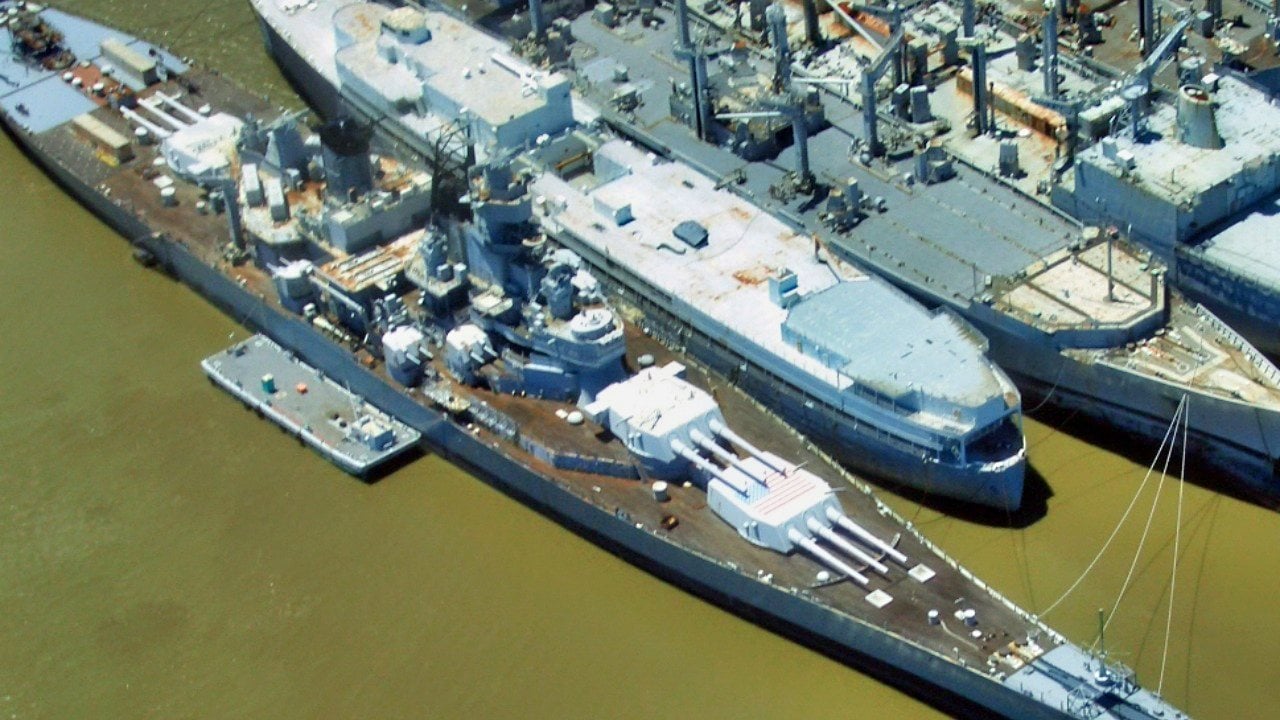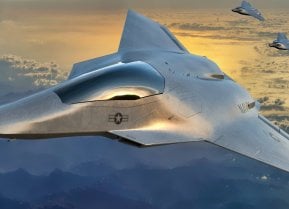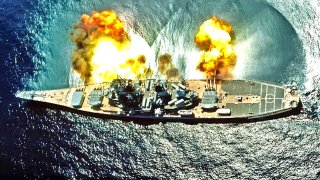Lessons Learned: I Was The Last Person to Fire a U.S. Navy Battleship’s 16-Inch Guns
The Iowa-class battleships, built during the 1940s, continue to captivate public interest despite their retirement over three decades ago. These legendary ships, which served in World War II and briefly in the 1980s and 1990s, represent the zenith of American battleship design.

Perversely, American ships had little political sex appeal despite outpacing their Soviet counterparts by technological measures.
What Luttwak says about hulking Soviet ships applies many times over to Iowa-class battleships. Like all battlewagons, their main and secondary guns are their signature feature. Each 16-inch, 50-caliber main gun is 67 feet long and can fling a 1,900- or 2,700-pound projectile over twenty miles. Our classic line when giving a ship tour was that the guns fired Volkswagens, which weighed roughly the same as a 16-inch shell. That captures imaginations. But the appeal of the Iowa-class goes beyond brute statistics. The ships’ elegant lines, their fluted bows in particular, have an artistic flair that few—not even fellow classes of battleship—can match. They were not designed primarily for style. But maybe designers happened on a politically valuable style in the course of fashioning a utilitarian ship of war.
Namely, a ship that excites the imagination of regular people.
The man on the street may not be an expert on sea combat, but his opinion matters all the same in an open society. Ships that are both visually imposing and beautiful to behold may help the navy garner political support. It may be possible to deliberately replicate what designers of the Iowa-class did by accident—and to harvest similar political dividends.
Battleships Just Won't Go Away
Justly or not, carriers, cruisers, destroyers, and submarines don’t seem to make the cultural grade compared to battleships. Maybe naval architects should start factoring style into their design efforts. For their part navy leaders should relearn how to retell history to persuasive effect. People are mostly unimpressed with standard navy talking points about how much cargo travels around the world by sea, etc., and needs the navy’s protection. That’s mere information, and Excel spreadsheets inspire few. People are impressed by what they see before them, and they love stories. They respond to yarns about ships and the sea. Combine matériel with narrative and you may have something.
It seems battlewagons of old still have something to teach the sea service.
About the Author: Dr. James Holmes
Dr. James Holmes holds the J. C. Wylie Chair of Maritime Strategy at the Naval War College and served on the faculty of the University of Georgia School of Public and International Affairs. A former U.S. Navy surface-warfare officer, he was the last gunnery officer in history to fire a battleship’s big guns in anger, during the first Gulf War in 1991.
All images are Creative Commons.


